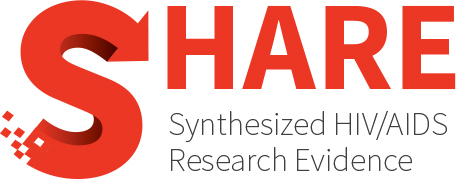Category Archives: Prevention, Engagement and Care Cascade
Mapping evidence on barriers to and facilitators of diagnosing noncommunicable diseases among people living with human immunodeficiency virus in low- and middle-income countries in Africa: A scoping review
OBJECTIVES: To map the evidence on the barriers to and facilitators of diagnosing noncommunicable diseases among people living with HIV in low- and middle-income countries in Africa. INTRODUCTION: Noncommunicable diseases...
Improving HIV preexposure prophylaxis uptake with artificial intelligence and automation: A systematic review
OBJECTIVES: To identify studies promoting the use of artificial intelligence (AI) or automation with HIV preexposure prophylaxis (PrEP) care and explore ways for AI to be used in PrEP interventions....
Incidence rate of tuberculosis among HIV infected children in Ethiopia: Systematic review and meta-analysis
Background Tuberculosis is one the leading causes of death from a single infectious disease, caused by the bacillus mycobacterium tuberculosis. In Ethiopia, even though several primary studies have been conducted...
Cost-effectiveness of differentiated care models that incorporate economic strengthening for HIV antiretroviral therapy adherence: A systematic review
BACKGROUND: There is some evidence that differentiated service delivery (DSD) models, which use a client-centered approach to simplify and increase access to care, improve clinical outcomes among people living with...
Health-related quality of life in people with advanced HIV disease, from 1996 to 2021: Systematic review and meta-analysis
The purpose of the study was to assess the effects of advanced HIV disease (AHD) on health-related quality of life (HRQoL) in PLHIV, the changes in HRQoL outcomes over the...
Clinical outcomes after acute coronary syndromes or revascularization among people living with HIV: A systematic review and meta-analysis
Importance Clinical outcomes after acute coronary syndromes (ACS) or percutaneous coronary interventions (PCIs) in people living with HIV have not been characterized in sufficient detail, and extant data have not...
The impact of armed conflicts on HIV treatment outcomes in Sub-Saharan Africa: A systematic review and meta-analysis
Background Despite the fact that Sub-Saharan Africa bears a disproportionate burden of armed conflicts and HIV infection, there has been inadequate synthesis of the impact of armed conflict on HIV...
Analysis and mapping of global research publications on point-of-care testing for infectious diseases
RATIONALE: This study presents the first comprehensive analysis and mapping of scientific research on point-of-care testing (POCT) in infectious diseases, filling a gap in understanding the evolving landscape of this...
Evaluating the use of antiviral drugs in HIV patients with cardiovascular diseases and how to reduce the incidence of cardiac events in these patients
Globally, the incidence of newly diagnosed human immunodeficiency virus (HIV) infections is concerning. Despite enhancing the quality of life for this patient population, antiretroviral therapy (ART) is linked to an...
Facilitators and barriers to adherence to anti-retroviral treatment among pregnant or breastfeeding women living with HIV and perinatally infected infants: A scoping review
In 2022, 54% of 1.5 million children (age 0-14) living with HIV had access to anti-retroviral medication (ART). Adherence to ART for pregnant or breastfeeding HIV + women is critical...
